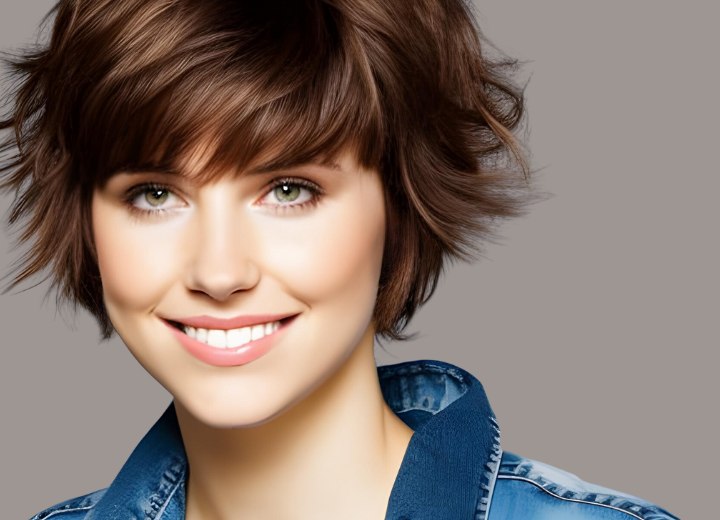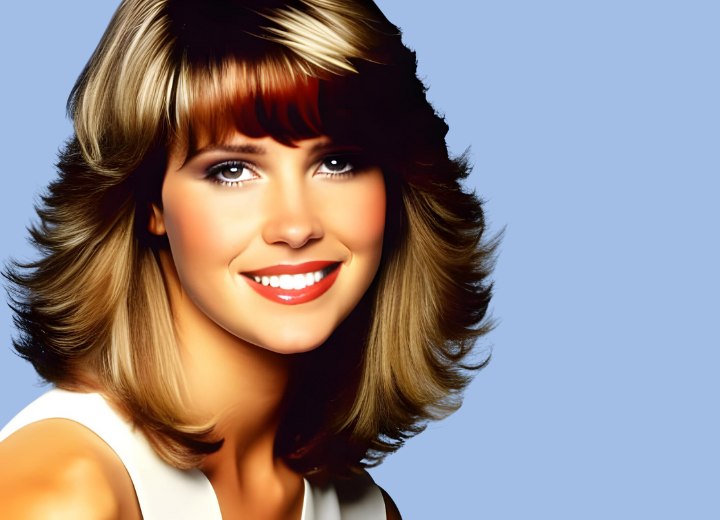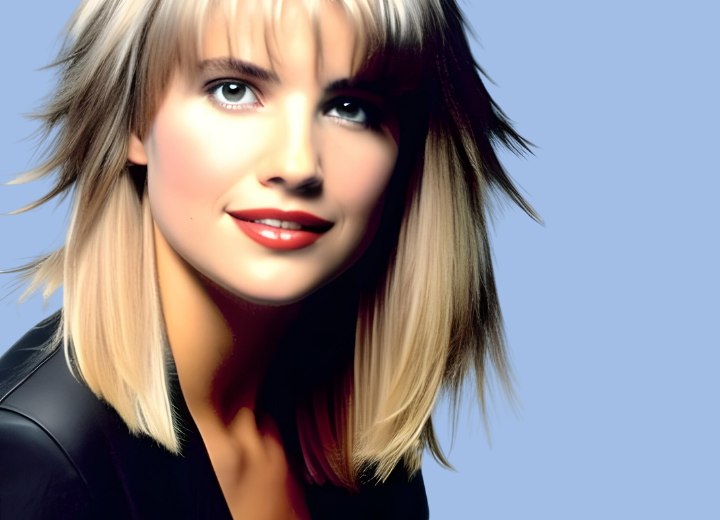Stepped Haircuts

A "graduated haircut" transitions from one length or point on the scalp to another and uses smoothly transitioning layers. However, a "stepped haircut," while featuring differing hair lengths, does not require as much effort to create smooth transitions between the varying lengths. This often results in a "choppy" haircut, but the choppiness is a result of the cutting technique rather than a texturing effect applied afterward.
The Benefits of the Stepped Cut:
A stepped haircut offers advantages over the traditional layered (graduated) cut, particularly in certain situations where traditional layering is not suitable. One of the notable benefits of a stepped cut is its suitability for curly hair. It allows for a balanced distribution of hair volume while avoiding excessive thinning at the bottom of the hair perimeter.
Moreover, hairstylists often caution against using traditional layering techniques on fine hair types or hair with less density. However, by incorporating carefully placed stepped layers, one can actually create the illusion of fuller hair and add volume to fine hair, all while avoiding the appearance of stringy ends. The deliberate crafting of the hair's "layers" with minimal "steps" results in overlapping haircut styles that complement each other and produce an overall fuller effect.
Lastly, the stepped haircut lends itself to a more edgy and youthful appeal in various styling applications. It particularly complements asymmetrical styling, making it flattering for individuals with specific features that need to be accommodated.
Varieties of Stepped Hairstyles:
Throughout history, various hairstyles can be classified, at least in principle, as "stepped" hairstyles. Stepped styles are essentially "disconnected" styles, where the layers are more distinct rather than smoothly transitioning from one point to another. A notable example of a stepped hairstyle is the iconic Rachel haircut from the 90s, despite its smooth and razor-cut layering.

Similar elements can be observed in the classic "rocker chick" mullet hairstyle. It involves short and spiky hair on the top and crown of the head, with a clear separation as the lower lengths are razor-cut and taper below the shoulders.
Even Florence Henderson, known for her role as Carol Brady on television's "Brady Bunch," sported a stepped haircut with a flip. Her hair featured short layering at the top, sides, and crown, creating a voluminous appearance in the upper part of her head. The long section at the nape flipped outward, creating the illusion of a longer neck.
How to Enhance Stepped Hairstyles:
If you opt for a "stepped" style rather than a traditional graduated cut, there are a few techniques you can employ to make the style more impactful.
Firstly, consider using hair color techniques strategically. If your stepped cut features specific lengths, you can use an edging technique to highlight the separation of layers and create a dramatic effect. Alternatively, a two-tone approach can be used to enhance the distinctiveness of the separate layers. For stepped cuts with varied and disjointed layering, adding highlights can help emphasize the layering effect.

If the hair appears dull, make sure to dry it by directing the airflow in the direction of hair growth, away from the scalp. Finish each section by using the "cool shot" feature on your dryer to cool the hair. This technique helps the cuticle lay flat, resulting in smoother and shinier hair. Additionally, applying a small amount of spray laminator will further enhance the shine.
For stepped cuts that aim for an edgy look with lots of spiky and choppy layers, it's essential to use a firm-hold styling gel and sculpting paste. These products will help achieve crisp and sharp ends in the final style. When the hair is very short, these products can be applied to damp hair and allowed to air dry for a super-crisp look. If needed throughout the day or evening, a small amount of water can be used to re-sharpen the style, ensuring you stay flawless.
©Hairfinder.com
See also:
How to texturize hair
The pros and cons of layered hair
